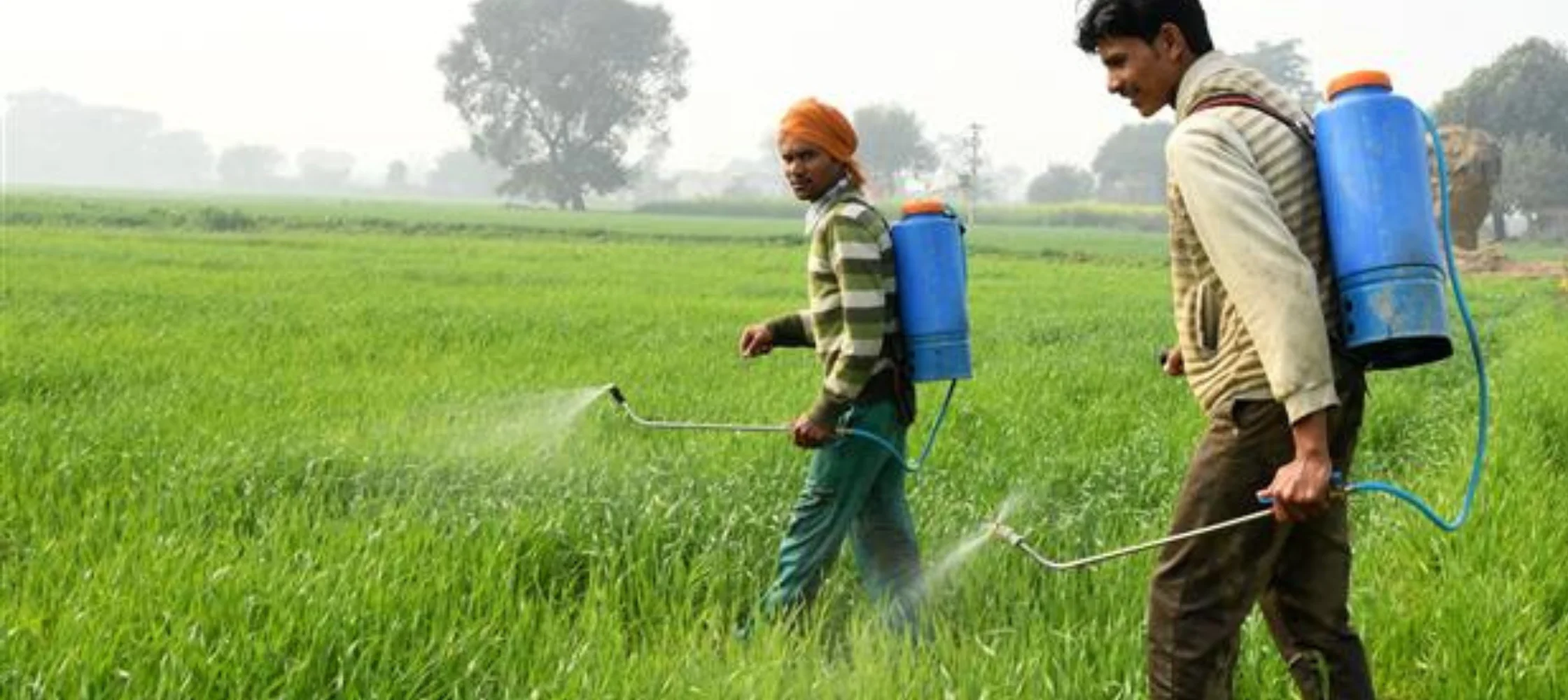
By:- Kamaldeep Singh Matharu, Gurmail Singh Sandhu and G.S. Makkar
Insect-pests incidence is one of the major causes of low crop yield and their timely management is very important for higher production. Generally, farmers use different types of pesticides to protect their crops, but the non-judicious use of pesticides is harmful to the environment and also to human health. Many pesticide poisoning cases happened due to improper handling of pesticides; such as the careless opening of containers/packing, spraying operation and storage of leftover pesticides. As per estimates, one-third of the total pesticide poisoning cases occurred in India only. Therefore, it is important to use pesticides safely to obtain maximum crop yield without any adverse effect on nontarget organisms. Hence, it is advisable to use pesticides in a precise manner. Some important points in this regard are mentioned below:
Precautions before spraying pesticides
A. Always purchase recommended pesticides and obtain bill from the shopkeeper.
B. Observe color of the triangle on the container/bottle of the pesticide (Table 1) and prefer green triangle pesticides. Read carefully the instructions given on the pesticide label and follow the same.
C. See the registration number, date of manufacture/ expiry on the labels and ensure that pumps or nozzles are not leaking.
D. Use separate spray pumps for herbicides and insecticides/fungicides.
E. Clean the spray pump with washing soda/surf solution before and after the spray.
F. Make all arrangements before spraying pesticides, such as pumps, nozzles, clean water and proper measuring gauges.
G. Inform the beekeepers around your fields before spraying.
H. Arrange clean water and soap in advance to wash hands and mouth after spraying.
I. Only a healthy person without any wounds on the body should be engaged in spraying and he should cover the whole body with clean clothes before spraying.
J. Pesticides should not be kept near food or eateries.
Precautions during spray
a. Always spray pesticides in the morning or evening.
b. Spray should be done on calm days and never spray across the direction of the wind flow.
c. Don’t spray with an empty stomach and always eat something before spraying.
d. Always use scissors or a knife to open the pesticide packet and never tear open the packing.
e. Wear hand gloves, mask, full-sleeve shirt and trousers for preparation of spray fluid and during the spraying operation.
f. Use recommended dose of pesticides and apply at the appropriate time.
g. The spray solutions should be prepared in drums using long sticks to permit stirring from a standing position and to protect the operation from splashing.
h. Do not spray alone and not eat, chew or smoke anything while spraying.
i. To prevent clogging in the nozzles, always use clean water for spraying.
j. Never make the mistake of opening a closed nozzle by blowing it with your mouth.
k. If the discharge rate of the nozzle exceeds by 10-15% than the initial discharge rate, the nozzle is considered as worn out. Replace the worn out nozzle.
l. A person engaged in spraying operation should not work more than eight hours a day.
Precautions after spray
A. Always clean the pump with a detergent solution after spraying of pesticide.
B. Keep pesticides in labeled containers only.
C. Keep the remaining pesticide containers away from the reach of children and animals.
D. Do not use empty containers for any work at home and destroy them by burying deep in the soil.
E. Wash all the clothes and safety kit worn during spraying.
F. After spraying the operator must take bath with clean water and soap.
G. Record the date of spraying, name of pesticide, dose and pest information in a notebook.
First-aid precautions for pesticide spraying accidents
In case of pesticide poisoning, the doctor should be called immediately. Before the doctor's arrival, the following first aid measures may be taken.
l. In case of pesticides contaminations to the eyes, then wash the eyes gently with a stream of running water immediately.
ll. If the pesticide entered into the body through the skin, then clean the patient's body with soap and water. Taking off his clothes and rapid washing is most important for reducing the extent of the injury.
lll. If the pesticide is swallowed, the poison should be removed from the patient's stomach by inducing vomiting. For this purpose, dissolve one teaspoon (15 grams) of salt in a glass of luke warm water and give it to the patient. Repeat this process until vomiting occurs.
lV. In case the patient feeling difficulty in breathing then, carry him to fresh air immediately (do not let him walk). Apply artificial respiration, if breathing has stopped or is irregular. Avoid vigorous application of pressure to the chest.
Table 1: Classification of pesticides based on their toxicity
|
|
|
|
|
|
|
|
|
|
|
|
|
|
|
|
|
|
|
|
|
|
|
|
|
The writers are from the Krishi Vigyan Kendra, Faridkot
Your email address will not be published. Required fields are marked *
29 Jan, 2024
29 Jan, 2024
29 Jan, 2024
25 Jan, 2024